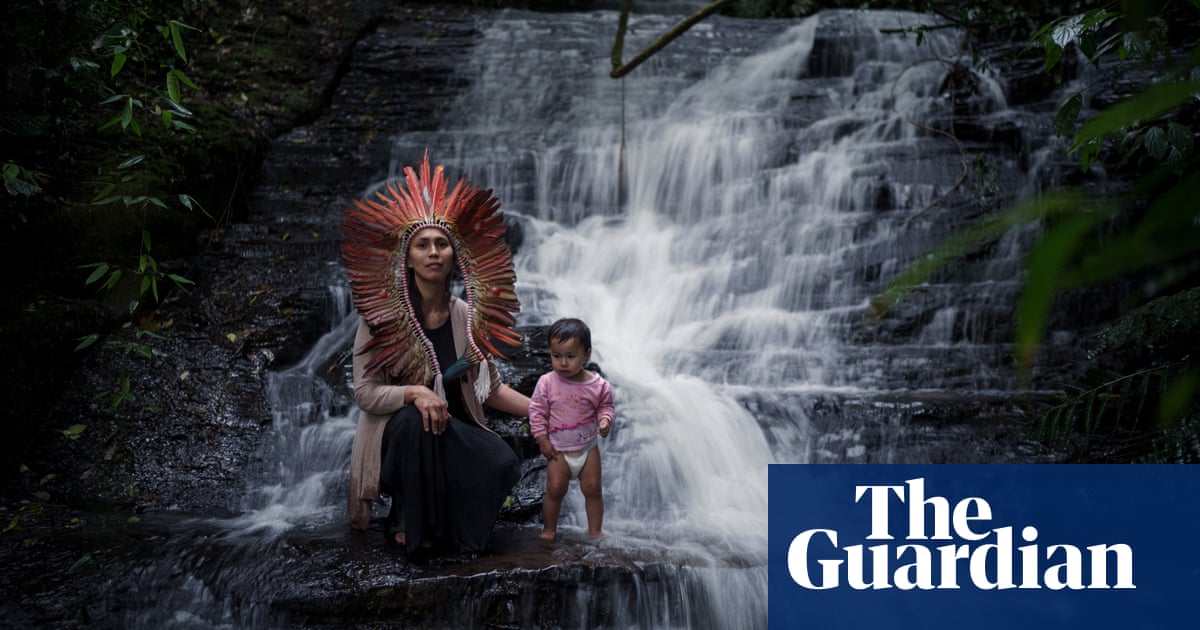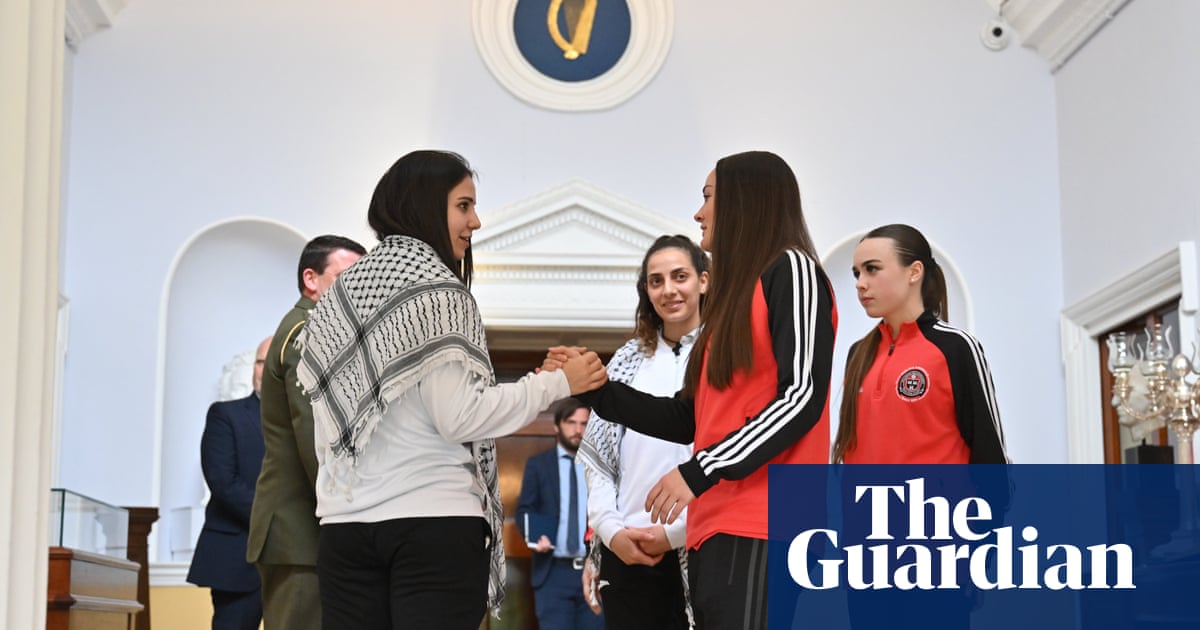
“We are not defenders of nature; we are nature defending itself.” These words from Yoko Kopacã, the 72-year-old leader of the Indigenous communities settling the Ibirama-Laklãnõ region in Santa Catarina, in southern Brazil, sum up the longstanding hope for justice in their struggle for land. For more than 100 years, the Xokleng people have waited for the Brazilian state to recognise their rights.
On 21 September they prevailed – and their victory in the federal supreme court will reshape the way the state approaches Indigenous land rights in Brazil.
Until the court’s decision, by nine justices out of 11, Indigenous people had to prove they occupied or contested the territory they claimed before 5 October 1988, the day Brazil’s federal constitution came into force. This was seen as unfair by campaigners, as many Indigenous people are nomadic or had been forcibly removed by miners or farmers, and disputes tended to be settled in favour of the landowners. However, the supreme court rejected the notion of a “time limit” on Indigenous people’s claims to ancestral land, and said the essential element must be how Indigenous people occupy and derive their livelihood from the land.
The legal argument of the “marco temporal”, or time limit, was first used in 2009 in a case related to the Raposa Serra do Sol reserve in the Amazon, and was an attempt by agribusiness lobbyists to curb the boundary of Indigenous lands, despite opposition from environmentalists.
In the same year, the Santa Catarina state government, through its Environmental Institute, evicted the Xokleng people, claiming they were illegally occupying two conservation areas, the Serra da Abelha and the Sassafrás biological reserve. The Xokleng appealed against the decision, and that’s when they came up against the time limit argument, which the state of Santa Catarina used to justify the eviction.
The case eventually reached the supreme court, whose recent verdict dismissed the time limit thesis, ending years of legal wrangling and giving the Xokleng a pivotal victory against the local state government. The case is important because in 2019, the supreme court decided that its decision would set a precendent, so the Ibirama-Laklãnõ verdict will have widespread implications for all land boundary disputes in Brazil, and Indigenous communities throughout the country are celebrating the ruling.
Yet this decision will hardly eliminate the tensions surrounding Brazil’s land conflicts, which have doggedly persisted despite rulings in the capital, Brasília. Even if they have prevailed in the supreme court, the Xokleng leaders that the Guardian met remain anxious about attacks by non-Indigenous tenants. Farmers also express worries over potential conflicts.
Frictions emerge when Indigenous ranchers and farmers live in the same region. The Ibirama-Laklãnõ land encompasses Alto Vale do Itajaí region, including Doutor Pedrinho, Itaiópolis, José Boiteux and Vitor Meireles municipalities. It is home to about 2,000 Indigenous people, primarily Xokleng but also Guarani and Kaingang.
The conflict over the Xokleng land has endured for more than a century. The contested 37,000 hectares (91,500 acres) had been first established in 1914 by the then Indian Protection Service (SPI), which later became Funai, the National Indigenous People Foundation. However, the Santa Catarina authorities did not respect the agreement and a substantial portion of the land was taken without Indigenous consent.
The Xokleng retreated to an area of about 14,000 hectares (35,000 acres). But a Funai study, including historical, anthropological, cartographic and environmental elements, has concluded that the traditional land use stands at nearly three times the current occupied area, more akin to the original 37,000 hectares. Funai used the study to support the Xokleng in their legal appeal.
According to Nduzi Gakran, a Xokleng president of Brazil’s first Indigenous environmental NGO, the dwellings occupy the 14,000-hectare segment: the surrounding area supports the community’s subsistence through traditional gathering, hunting and fishing.
At the boundary of the 37,000-hectare area, marked by the remains of an imbuia tree, Xokleng people would previously set up a temporary camp for the pinhão harvest – the fruit of the araucaria trees that grow extensively in the region. Gakran says: “They put pressure on us in our region to intimidate our leaders and criminalise us … We have protected nature for millennia.
I’m in this fight for the memory of my parents and grandparents who were killed in Santa Catarina
Yoko Kopacã, community elder
“I’m astonished because the Environmental Institute sued Xokleng. We defended our right, which is simply the right to the land. The map established the 37,000-hectare area; it just needed to be respected. Yet nobody respected it,” he adds.
In response to the state government’s claim to the territory, members of the community such as elder Yoko Kopacã and her family set up camp at the site to symbolise resistance and the fight for their land. Kopacã says: “I honour my ancestors; that’s why I’m in this fight, for the memory of my parents and grandparents who were killed and suffered from the Indigenous genocide in Santa Catarina.”
Vomble Camelem, chief of the nine remaining Indigenous villages in the territory, believes their ancestors, many of whom were victims of indiscriminate killings, spiritually sustain their struggle. He says their people might not endure today without reverence for those who have gone before.
“We had this land where Indigenous people roamed; I hunted a lot with my father in these areas. Even with the 37,000 hectares, we will have limits, whereas Indigenous people of that time had none. The time limit should not be applied to us but to non-Indigenous people who invaded Brazil,” Camelem says.
Long history of persecution
The enduring conflict against white settlers in the region is rooted in the history of violence and land disputes over generations. Research by anthropologist Sílvio Coelho dos Santos in his book Os Índios Xokleng, Memória Visual, reveals that an encounter between the Xokleng and white settlers in 1914 led to the establishment of a sort of “meeting point” by the Indian Protection Service.
The initiative aimed to establish peaceful relations, as the Xokleng had suffered at the hands of “bugreiros”, white mercenaries who hunted Indigenous people – “bugres”, meaning savages – so their land could be claimed by settlers.
In evidence gathered during the 1970s, a bugreiro told Dos Santos that they used to cut off the ears of Indigenous people as proof of their kills to the colonisers.
Eunice Kerexu, secretary of Indigenous environmental and territorial rights at the Ministry of Indigenous Peoples, said before the supreme court’s verdict: “The Xokleng people currently face the grim prospect of extinction due to the relentless extermination attempts that have unfolded over history. The notoriety of the ‘bugreiros’ is a regrettable but undeniable reality in Santa Catarina. These Indigenous-people hunters were paid based on the number of ears they delivered to their masters.”
As well as the loss of their kin and the land conflicts, the Xokleng also had to contend with a dam being built in the 1970s which flooded part of their territory and affected their way of life. Despite the upheaval, the Xokleng maintained a settlement in the area as a form of resistance against eviction claims by the Santa Catarina Environmental Institute.
Indigenous land claims
Funai has not yet assessed the potential consequences of the “time limit” judgment but says there are approximately 490 Indigenous land claims. A defendant in the supreme court case, Funai had said before the verdict: “The time limit argument disregards the lengthy history of dispossession and violence against Indigenous peoples, leading to their expulsion from their ancestral lands. That contradicts Indigenous rights enshrined in the Brazilian federal constitution and international treaties ratified by the Brazilian state.”
Rafael Modesto, legal adviser to the Indigenous Missionary Council and lawyer for the Xokleng community, argues that there are no more obstacles to the Indigenous people’s right to occupy their ancestral environment.
However, non-Indigenous groups, including farmers, landowners and timber companies, still colonise the 37,000-hectare area. The Guardian saw several sections of deforested land with piles of cut-down trees. Instead of the araucaria tree, important to Indigenous people for its pine nuts and its role in the Atlantic Forest ecosystem, there are eucalyptus and pine plantations, which cater to the paper, pulp, and furniture industries and are considered “green deserts” by rights organisations.
According to farmer Francisco Jeremias, representing farmers within the disputed territory, the lands they occupy have deeds and were legitimately sold by the state government of Santa Catarina. Jeremias says: “We have consistently respected the restricted area of 14,000 hectares. My ancestors and grandparents also upheld this boundary; some sections belong to the Indigenous people, while others belong to the farmers. All the farmers bought and hold acts to these lands, some dating back 121 years.”
According to Salesiano Durigon, the farmers’ lawyer, the removal of the “time limit” doctrine will affect 550 families in Santa Catarina.












